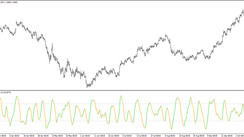Introduction: Unraveling the World of Currency Swaps
Currency swaps have steadily emerged as a cornerstone in the realm of global finance, often serving as a beacon for multinational corporations and financial institutions navigating the tumultuous seas of foreign exchange. At a glance, currency swaps are meticulously crafted agreements where two entities, often from different economic regions, trade predetermined volumes of their respective currencies. Think of them as not just transactional arrangements, but symbiotic partnerships where both parties safeguard their financial interests by effectively lending and lending back. Whether it's to guard against unforeseen exchange rate movements, anticipate shifts in the global currency milieu, or secure advantageous terms in foreign borrowings, these swaps are the linchpin.
Financial institutions, both in a proprietary capacity and as representatives of corporate clients, are frequently at the helm of these swap negotiations. And their prominence isn't unwarranted; as affirmed by the Bank for International Settlements, currency swaps and their kin, FX forwards, now dominate the daily ebb and flow of global currency markets.
Key Facets of Currency Swaps
-
Robust Mutualism: Far from being unidirectional, currency swaps epitomize mutualistic financial arrangements, allowing both involved entities to navigate their monetary aspirations with minimized liabilities and enhanced predictability.
-
Intricate Interest Dynamics: Characteristically, currency swaps materialize as interlinked loans. This implies that the parties, beyond the principal amounts, often reciprocate with interest payments, fostering a deeply symbiotic financial rhythm.
-
A Haven for Risk Aversion: Overwhelmingly spearheaded by financial entities, these swaps are indispensable tools to deflect the vagaries of volatile exchange rates and achieve coveted lower interest rates on diverse foreign borrowings.
Deepening Our Understanding: The Mechanics of Currency Swaps
To truly appreciate the nuances of currency or FX swaps, one must delve deeper into their operational intricacies. Let's break it down: two parties commit to exchanging specific sums of two distinct currencies. Imagine a transaction where a European entity procures 100 million British pounds (GBP) while relinquishing an equivalent of 125 million USD. This translates to a GBP/USD rate of 1.25. As the swap reaches its maturity, the initial transaction is mirrored, often based on the same or another negotiated exchange rate, marking the culmination of the agreement.
The Dance of FX Swaps with Exchange Rates
Swaps can span a broad temporal spectrum, often stretching over several years. Given this extended duration, it's not uncommon for the spot market exchange rates of the involved currencies to exhibit significant swings. And this is precisely where the allure of currency swaps shines brightest. Financial institutions gravitate towards these swaps for the unparalleled assurance they offer— a precise understanding of future financial obligations. If a looming appreciation of a borrowed currency is anticipated, swaps can serve as a potent buffer, ensuring efficient and economical repayments.
FX Swaps vs. Cross-Currency Swaps: Distinguishing the Twins
Currency swap and cross-currency swap — two terms that often coalesce in financial parlance, but upon closer scrutiny, reveal subtle distinctions. At its heart, a cross-currency swap mirrors its counterpart, with one crucial addition: it mandates the exchange of interest payments, in addition to principal amounts, throughout the swap’s tenure. These interest payments can oscillate between fixed, floating, or even a hybrid structure, lending remarkable adaptability to the agreement.
By leveraging such swaps, borrowers not only arm themselves against exchange rate fluctuations but also often secure interest rates that are significantly more favorable than those available via direct foreign borrowings.
Glimpses from the Real World: How Currency Swaps Illuminate Financial Strategies
Consider the aspirations of a US conglomerate envisioning expansion in the UK and consequently seeking British pounds. Concurrently, a UK enterprise is on the hunt for USD to fund its US-centric endeavors. Through their financial intermediaries, these entities can strike a mutually rewarding deal, obtaining the requisite currencies without the conventional route of foreign loans. Such a strategy circumvents potential financial quagmires, like escalating interest rates and burgeoning debt trajectories.
Who's Swapping and Why?
From multinational juggernauts to central banking authorities and even globally influential entities like the IMF, currency swaps have permeated the financial strategies of a wide spectrum of institutions. These swaps have risen to prominence because they serve as:
-
Reliable Shields: They allow firms to robustly hedge against unpredictable foreign exchange exposures.
-
Cost-effective Portals: Through swaps, entities can often realize cost savings, as foreign currency borrowings become more economical.
-
Gateways to Currency Access: For firms eyeing specific currencies, swaps can serve as invaluable channels, especially when traditional acquisition routes pose challenges.
-
Leverage Points: Swaps enable participants to astutely exploit interest rate differentials between nations, optimizing financial outcomes.
Recognizing Challenges: The Other Side of the Coin
As with any financial instrument, currency swaps are not devoid of challenges. Counterparty risk, the looming threat of a party defaulting, stands as a tangible concern. Additionally, the sheer complexity of these swaps can daunt even seasoned financial institutions. Entrants must also grapple with potential costs associated with swap management and negotiation, while limited liquidity can sometimes impede optimal engagement with swaps.
Venturing Beyond: Viable Alternatives to Currency Swaps
While currency swaps have etched a vital role in global finance, they are not the sole guardians of currency risk management. Corporations have a basket of other financial tools at their disposal, encompassing forward contracts, options, and even natural hedges. By strategically opting for these avenues, entities can still navigate foreign transactions seamlessly, often sidestepping the necessity of engaging with swaps and the risks they entail.
Conclusion: Synthesizing the Pivotal Role of Currency Swaps
As we draw our exploration to a close, it becomes profoundly evident that currency swaps hold a central, irreplaceable role in the intricate web of global finance. They foster environments rich with stability and foresight, where entities can ply their trade in foreign territories with a discerning eye on potential risks.
By partaking in a swap, entities not only swap specific quantities of currencies but also embark on a journey of mutual financial growth, premised on agreed exchange rates. The swap rate, often reflective of the relative borrowing costs between the currencies, becomes a beacon of financial prudence, guiding organizations in their foreign market endeavours with a foresight rich with stability and acumen.





